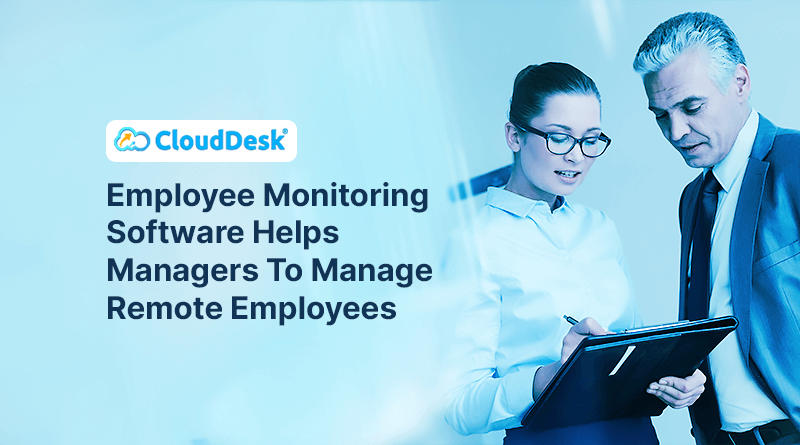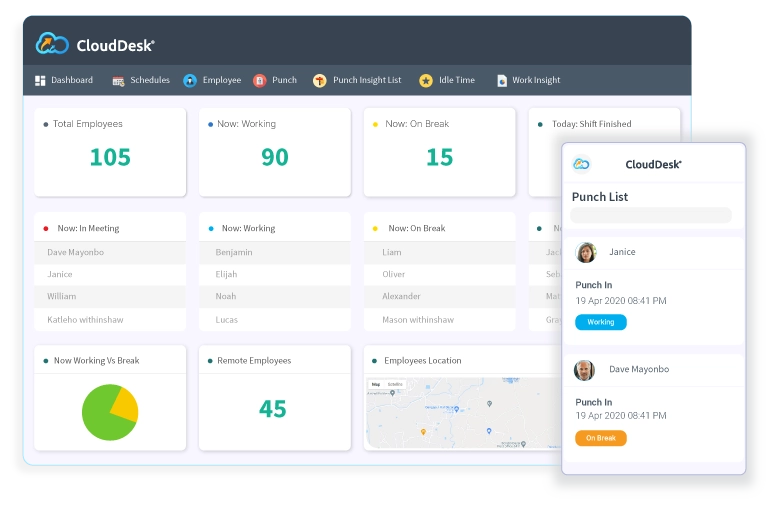Businesses today hire excellent personnel from around the world and embrace remote trends. Managers who are in charge of overseeing remote teams often find it challenging to develop, mentor, and support employees. With technology evolving, information and resources have become accessible to everyone from nook and cranny. Traditional working is becoming less popular. It’s high… Continue reading CloudDesk: Seamlessly Manage a New Remote Team
CloudDesk: Seamlessly Manage a New Remote Team

Businesses today hire excellent personnel from around the world and embrace remote trends. Managers who are in charge of overseeing remote teams often find it challenging to develop, mentor, and support employees. With technology evolving, information and resources have become accessible to everyone from nook and cranny. Traditional working is becoming less popular. It’s high time; the onus is for managers to learn new team management strategies to effectively manage newly built remote teams.
Challenges in Managing Remote Teams
When remote work comes up, it’s common for people to be doubtful of how seamlessly work is done on the projects. The whole process involves connecting with remote teams living in different countries. Each person aims to promote the culture of remote work. It’s becoming a tough gig to empower teams to thrive working from other counties. When managing remote employees, challenges can include project management, deadlines, productivity, time theft, and keeping employees motivated. The difficulties associated with managing a remote team are growing as people work from home more frequently, such as:
- Lacking the proper communication tool
- Hiring the right resources
- Missing employee accountability & engagement
- No clear roles and responsibilities
- Setting schedules & different time zones
- Difficulty tracking employee productivity
- Making everyone feel part of the team
Remote Work Management: How to Run Remote Team
While many big companies are successfully working with 100% remote teams, many other companies go through thick and thin to run successfully as remote working companies. If you are constantly wondering how to manage remote teams and are looking for ideas about how teams have successfully set themselves remotely, we have some tips for you.
Set Clear Expectations
The most important thing managers can do when their employees are working remotely is to establish shared expectations with everyone involved. Those expectations encompass daily work hours, timely meetings, key project deadlines, availability, and different communications systems. Let your employees know your plan and what you expect from each individual. Assign a few team members to help you document any necessary changes to project management steps. Share these documents with every employee so that they are aware of any changes.
Schedule Daily Check-ins
This may seem overkill, but this is key for managers and teams new to remote working. While email, phone calls, and texts used to be enough, managers who are good at leading from a distance are now more likely to use video conferencing to make up for the lack of face-to-face interactions. Setting up a daily video call benefits both managers and employees. Managers can stay up-to-date on ongoing projects and guide employees easily if they need feedback.
Invest in Team Management Software
By now, many of us have been forced down a path of digital transformation that takes most organizations months. There is a stiff rise in the use of team management software. It has become a necessary tool for managing remote teams. When employees work remotely, managers need to know when they started working, when they took breaks, how much time they spent on projects, and if they are using social media. Luckily, Employee monitoring software like CloudDesk is the answer. CloudDesk gives managers real-time visibility into remote workforce activities. Use CloudDesk’s employee productivity tracking software to monitor performance and observe how they spend their time during work hours. Gain visibility with daily reports that categorize work into the productive, meeting, break, and idle time.
Focus on Outcomes
This is an excellent way to help employees feel more involved and empowered. Clearly stating the goals and results you want to achieve and then allowing employees (who have the training and resources to carry out the plan) to develop a way to reach those goals increases creativity and ownership. Even though micromanaging people is hard, it’s even more challenging in a remote place.
Provide Essential Resources
Providing essential resources is important when employees are working remotely. No great battlefield commander sends their troops into the fray without proper training and resources. Like this, many remote employees may require new laptops, better WiFi, and new technology, such as new headsets and webcams. Give them a paid subscription to essential tools that employees can use easily.
Give Flexibility
This is the main obstacle. Every team member comes from a unique family situation. Some people will be married and have kids. Others won’t. Some people will have personal home offices, while others will conduct meetings in their bedrooms. Perhaps some are at Starbucks. Some people may be having problems with their relationships. The key takeaway is that a manager must be aware of the particular circumstances that each employee faces. It won’t be perfect, but that’s the new normal!
Take Away
As the market becomes more global, so should your team. When managing a far away team, ensure you know what’s going on with them. If you know how to manage remote workers well, with the right tips and tricks, you should be able to create a lively business with your remote workers. Working from home can be good for your business if you’re willing to put in extra work and push your team to do well.
Similar Posts

Employee Monitoring Software Helps Managers To Manage Remote Employees

How Remote Work Leads to More Loyal Employees




